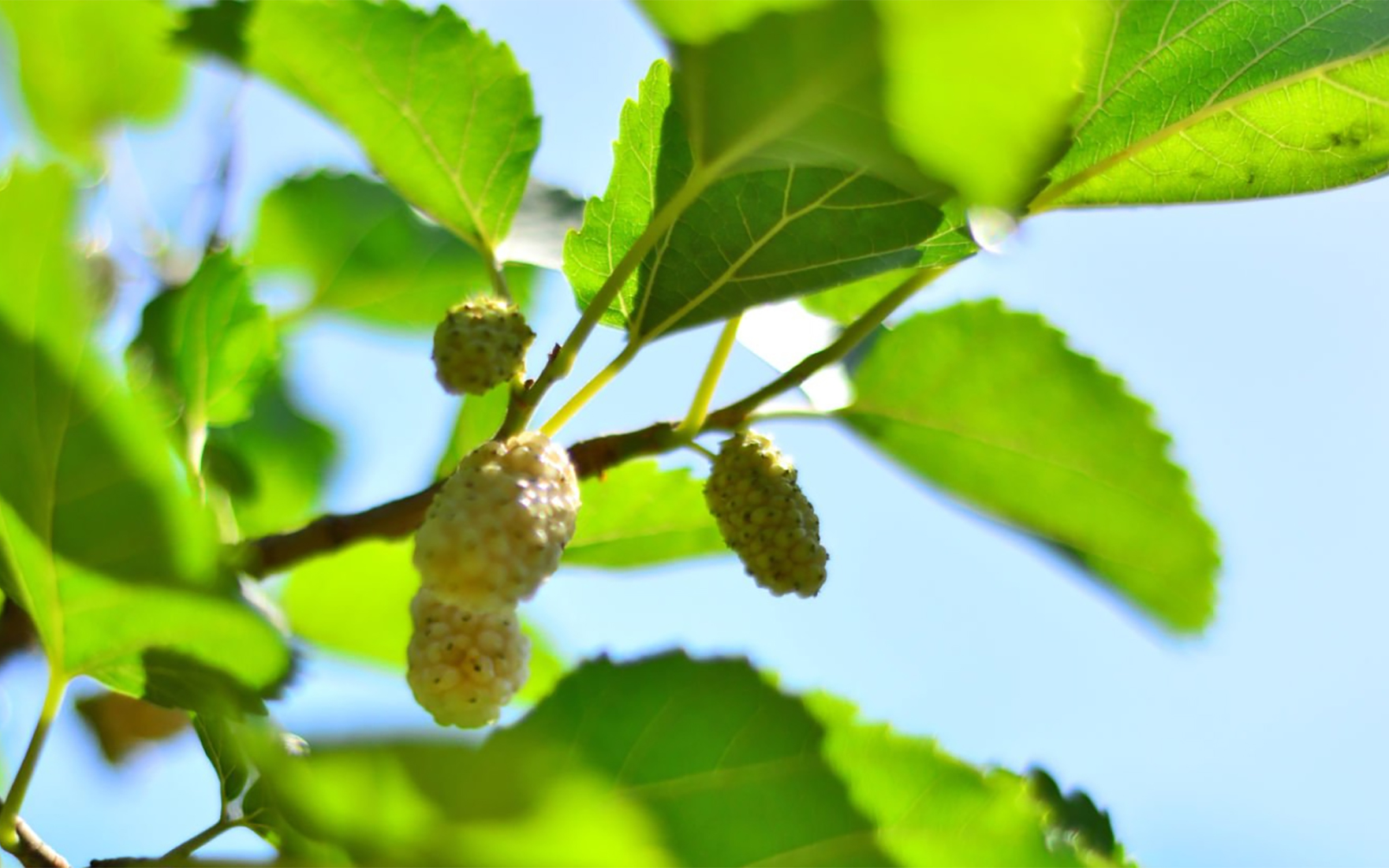MRd.wm31 is a specialized ingredient formulated from a combination of Moradyn® pigmented corn extract (Zea mays var. Moradyn® (L.)) and White Mulberry extract (Morus alba L.). The unique phytocomplex from Moradyn®—rich in anthocyanins and flavonols—works synergistically with the active compounds in Morus alba, including 1-Deoxynojirimycin (1-DNJ), to support effective weight management.
Key Preclinical Findings
Preclinical studies on MRd.wm31 have demonstrated its ability to:
- Effectively inhibit α-glucosidase, blocking intestinal carbohydrate digestion and promoting hypoglycemic effects
- Significantly prevent the formation of advanced glycation end-products (AGEs), confirming strong antiglycative activity in vitro
- Strongly stimulate lipolysis, as evidenced by increased glycerol release compared to cells treated with isoproterenol alone
Standardization MRd.wm31 is standardized to:
- ≥ 3.0% anthocyanins (HPLC), with α-glucosidase inhibiting activity
- ≥ 1.0% 1-Deoxynojirimycin (HPLC)
WEIGHT
MANAGEMENT
While balanced nutrition is the foundation of weight management, supplements like anthocyanins and 1-DNJ can support this process by reducing carbohydrate and fat absorption, aiding calorie control.
Anthocyanins have been shown to counter diet-induced obesity by increasing fecal butyric acid, enhancing hepatic antioxidant activity, reducing lipid peroxidation, and suppressing inflammatory markers (TNF-α, IL-6, iNOS, NF-κB). Additionally, they modulate TLR and AMPK signaling pathways, downregulating genes involved in fatty acid and triglyceride synthesis in white adipose tissue. [Kim et al., 2023]
1-DNJ, the primary active compound in Morus alba, demonstrates α-glucosidase inhibition equal to or exceeding that of acarbose, a common diabetes drug also used for weight control. Morus alba extracts also inhibit pancreatic lipase, reducing fat absorption, with an IC50 of 0.01 mg/mL, albeit less potent than orlistat. [Ntalouka et al., 2024]
GLUCOSE
MANAGEMENT
MRd.wm31 helps manage postprandial hyperglycemia by inhibiting enzymes responsible for carbohydrate metabolism.
The Moradyn® phytocomplex exhibits strong, dose-dependent α-glucosidase inhibition, achieving 97.38% inhibition at 1 mg/mL—clearly outperforming acarbose. [Ferron et al., 2020]
Administration of anthocyanin-rich purple corn has been shown to lower blood glucose levels, improve HOMA-β and HOMA-IS scores, increase plasma GLP-1 and pancreatic GLP-1R levels, and enhance pancreatic morphology in high-fat, high-fructose-fed rats. [Chayati et al., 2019]
1-DNJ from Morus alba competitively and reversibly inhibits α-glucosidase due to its structural similarity to glucose and high binding affinity for the enzyme’s active site. It has demonstrated inhibition comparable to, or better than, acarbose. [Ntalouka et al., 2024]
WEIGHT
MANAGEMENT
GLUCOSE
MANAGEMENT
MRd.wm31 is the combination of two complementary extracts: the exclusive phytocomplex from the MORADYN® pigmented corn variety, featuring a specific profile of anthocyanins and flavonoids, enhanced by white mulberry extract. In the latter, 1-deoxynojirimycin (1-DNJ) provides a multifunctional effect by regulating carbohydrate and nutrient absorption while also influencing appetite, supporting effective weight management. |

Alpha-glucosidase inhibitors (AGIs) help lower blood glucose levels and may prevent or delay the onset of type 2 diabetes mellitus (T2DM) and its related complications in at-risk individuals. By inhibiting α-glucosidase, these compounds slow the breakdown of complex carbohydrates, delaying glucose absorption and reducing postprandial hyperglycemia. This makes α-glucosidase a key therapeutic target in T2DM management. [Del Prete et al., 2024]
The most well-known α-glucosidase inhibitor in Morus alba is 1-Deoxynojirimycin (1-DNJ). Structurally similar to glucose, 1-DNJ binds with high affinity to the enzyme’s active site, competitively and reversibly inhibiting its activity. Notably, 1-DNJ has demonstrated α-glucosidase inhibitory effects equal to—or even greater than—acarbose, a commonly prescribed antidiabetic drug. [Ntalouka et al., 2024]
ABOUT MORADYN®

The pigmented corn variety MORADYN® (Zea mays var. Moradyn® (L.)) was developed through traditional breeding techniques to create a high value-added nutritional profile, without altering its original genetic makeup. It is currently cultivated in Lombardy, in the flatlands of northern Italy, GMO and pesticides free. Its unique anthocyanin and flavonol composition has been thoroughly characterized, with cyanidin-3-dimalonylglucoside, cyanidin-3-glucoside (C3G), pelargonidin-3-glucoside, and peonidin-3-glucoside identified as the predominant anthocyanins.
ABOUT WHITE MULBERRY
Morus alba (White Mulberry) activates the IRS/PI3K/Akt pathway, increases GLUT4 expression and translocation to the cell membrane, and enhances glucose uptake. It also promotes AMPK activation, mitochondrial biogenesis, and boosts antioxidant capacity. [Ntalouka et al., 2024]

White mulberry (Morus alba L.) has been valued as both a food source and traditional medicine in various cultures since ancient times. Its fruits and leaves are rich in polyphenols, with flavonoids such as rutin, quercetin, kaempferol, and isoquercitrin being particularly abundant. Other key phenolic compounds include chlorogenic acid and caffeic acid. The leaves, in particular, are prized for their high concentration of bioactive compounds, especially 1-deoxynojirimycin (1-DNJ), which is known for its potent antihyperglycemic properties.
